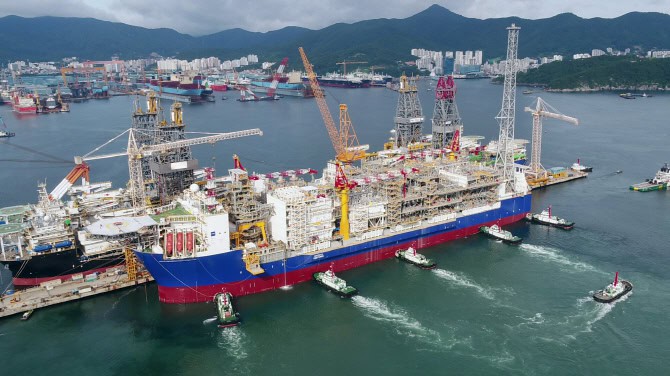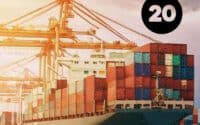The Port Ecosystem: Exploring the symbiotic relationship between ships and their ports of call

Before skyscrapers and vast cityscapes, the lifelines of ancient civilizations often lay along the coastlines, dotted with bustling ports. From the Phoenician trade hubs to the magnificent Roman port of Ostia, maritime ports have been at the crux of global interactions, commerce, and exploration. They have witnessed the rise and fall of empires, facilitated the spread of cultures and ideas, and have been the silent protagonists in many a historic chapter. As maritime technology evolved, from simple rafts to colossal container ships, ports too transformed, adapting to the needs of the times and shaping the course of human history.
* Please send feedback/suggestions to editor @ shipuniverse.com
Centers of Economic Pulse: The Strategic Role of Ports in Global Trade
In today’s globalized world, ports serve as the primary nodes in the vast network of international trade. They are more than mere docking points; they are complex logistical hubs, playing a pivotal role in a country’s economic health.
- Economic Powerhouses: Major ports often contribute significantly to their nation’s GDP. They facilitate the flow of goods, from daily essentials to luxury items, ensuring economies run smoothly.
- Job Generators: Ports are massive employment generators. From dockworkers and customs officials to logistics managers and freight forwarders, they offer a myriad of job opportunities, directly and indirectly.
- Trade Balancers: By serving as entry and exit points for goods, ports play a crucial role in balancing trade deficits and surpluses, influencing economic strategies and policies at the national level.
More Than Just Berths: The Multifaceted Functions of a Port
A glance at a modern port reveals a beehive of activities. Beyond the obvious function of providing berthing spaces for ships, ports are multi-functional entities.
- Logistical Hubs: Ports are equipped with vast storage facilities, from cold storages for perishable goods to specialized warehouses for hazardous materials. They play a critical role in the supply chain, ensuring goods are stored, managed, and dispatched efficiently.
- Service Centers: They offer essential services to ships, such as refueling, maintenance, and waste management.
- Security Checkpoints: In an age of increased global threats, ports act as the first line of defense, with rigorous customs checks and security screenings.
- Environmental Stewards: Many modern ports have also taken up the mantle of environmental guardianship, implementing sustainable practices, managing waste effectively, and ensuring minimal harm to marine ecosystems.
Ports as Lifelines: Essential Services for Vessels
The relationship between a ship and a port goes beyond a mere docking point. Ports are akin to service stations, but for colossal marine vessels.
- Refueling Stations: Much like cars need gas stations, ships need ports to refuel, ensuring they can continue their voyages without interruption. Ports offer varied fuel types, catering to different ship engines and their energy requirements.
- Maintenance and Repair Hubs: With the wear and tear of long voyages, ships often require routine maintenance and sometimes urgent repairs. Ports provide the necessary facilities, from dry docks to specialized mechanics, ensuring vessels remain sea-worthy.
- Oases of Crew Welfare: Ports offer a respite to the crew from the constant rocking of the sea. They provide amenities like fresh water, food supplies, and sometimes even medical facilities, ensuring the wellbeing of those aboard.
Economic Tides: The Impact of Ships on Port Economies
Ships are not just transient entities; their presence or absence can significantly influence a port’s economic health.
- Boosting Local Job Markets: Every ship that docks requires an army of workers, from unloading cargo to administrative tasks. This demand creates a plethora of job opportunities, from short-term contracts to permanent positions, invigorating local employment sectors.
- Stimulating Trade: A regular inflow of ships often means a steady stream of goods, boosting trade and commerce. From local vendors supplying ship provisions to larger businesses leveraging the influx of foreign goods, ships stimulate diverse economic activities.
Navigating Coordination: Challenges in Ship-Port Dynamics
Like any relationship, the dynamics between ships and ports come with their set of challenges.
- The Timing Tango: Coordinating the arrival and departure times of multiple vessels to prevent congestion and ensure efficient use of berths is a logistical challenge that ports constantly grapple with.
- Berthing Blues: Allocating appropriate berthing spaces based on a ship’s size, cargo, and requirements demands meticulous planning. Mismanagement can lead to delays, increased costs, and potential hazards.
- Seamless Coordination: Effective communication between ship captains, port authorities, and service providers is crucial to prevent misunderstandings and ensure smooth operations. In the digital age, this demands advanced technological solutions and regular training sessions.
Additional Resources
- World Shipping Council (WSC) This organization is a key stakeholder in global maritime issues. Their website often features reports, studies, and relevant updates about the shipping industry and its relationship with ports.
- Port Technology (PTI) A leading publication in the port and terminal industry, it often features articles about technological advancements, operational strategies, and industry news.
- The International Maritime Organization (IMO) As a specialized agency of the United Nations, the IMO has a wealth of information, including regulations, guidelines, and news about both ships and ports.
- Maritime Executive This magazine offers news, articles, and reports about all things maritime, including the dynamics between ships and ports.
- Lloyd’s List One of the world’s oldest continuously running journals, Lloyd’s List provides a mix of the latest shipping news, analysis, and market insights.

Do you have any feedback or additional insights? Please reach out to editor @ shipuniverse.com



